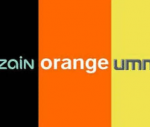You are here
Europe needs an industrial development fund
Jun 28,2024 - Last updated at Jun 28,2024
WARSAW — In 2016, former European Commission President Jacques Delorssaid that if EU policies “jeopardise cohesion and sacrifice social standards”, then “the European project has no chance of winning the support of European citizens”.
In the wake of this month’s European Parliament election, Delors’s observation seems more pertinent than ever.
Following the far-right’s sizable gains, the new European Parliament is expected to prioritise issues like immigration, security and the ongoing cost-of-living crisis over climate change.
Given the number of incoming MEPs opposing the bloc’s green agenda, the European Union may also be forced to slow its net-zero transition.
But instead of changings course, the EU should double down on its climate goals and take a page from the playbooks of China and the United States.
In particular, it should emulate US President Joe Biden’s Inflation Reduction Act (IRA) by creating a “buy green and European” programme and a European Industrial Development Fund (EIDF) to support its clean-energy transition.
One of the far-right’s most popular arguments against the energy transition is that the European Green Deal relies heavily on inputs from China and the US. EU imports of clean-tech products from China have skyrocketed in recent years, totaling $23.3 billion for lithium-ion batteries, $19.1 billion for solar panels, and $14.5 billion for electric vehicles (EVs) in 2023 alone.
By contrast, the IRA dramatically increased America’s investment in renewable energy. In the second quarter of 2023, for example, the US invested nearly $10 billion in battery-manufacturing technology, more than double its total investment in batteries, solar and wind power, critical materials, and EVs in the second quarter of 2022.
In the face of greater global competition, the EU economy finds itself in a double bind.
On one hand, its most dynamic companies are investing in the US rather than in Europe.
On the other hand, exports from China to the EU are increasing, especially following Biden’s latest tariffs on Chinese goods. One might expect that a more nationalist European Parliament would improve the outlook for the EU’s industrial sector. But share prices for leading European renewable-energy companies like Vestas, Nordex and Orsted declined the day after the election, owing to fears that the far right’s gains could delay the green transition.
To shore up the EU’s competitive position, policymakers must act decisively to support critical industries. More than 1,200 organisations, including 840 leading manufacturing companies, recently signed the Antwerp Declaration — which calls for a “European Industrial Deal” as a key part of the EU’s strategic agenda for 2024-29.
Belgian Prime Minister Alexander De Croo put it best, “How do we continue to grow our European industry? The answer is: with a European Industrial Deal at the same level as a European Green Deal.”
Four steps in particular are necessary. First, European policymakers must recognise that slowing the net-zero transition will erode the EU’s global competitiveness.
Adopting zero-emission technologies is the best way to reduce fossil-fuel imports and achieve energy self-sufficiency.
By contrast, maintaining the status quo undermines the bloc’s energy security strategy and plays into Russian President Vladimir Putin’s hands.
Second, establishing the EIDF is crucial to achieving energy independence and technological sovereignty. As the implementation of pan-European financial aid during the COVID-19 crisis showed, EU institutions can make critical decisions and act on them within months when necessary.
Third, the EIDF should be financed through common debt issuances. To boost the production of green technologies such as electric vehicles, heat pumps, and photovoltaic panels, this funding mechanism should be easily accessible to entrepreneurs without excessive eligibility requirements.
Crucially, the EIDF cannot succeed without adequate financing tools for renewable-energy companies in the EU — a benefit that US companies already enjoy under the IRA. But policymakers should make such funding conditional on investments in production capacity and job creation in specific industries.
Lastly, the issuance of common debt should be accompanied by a concerted effort to identify new revenue sources.
One option is to impose additional import tariffs on Chinese EVs. Another approach is to tax digital platforms and plastic imports.
Historically, EU funds were allocated according to the bloc’s cohesion policies and member states’ GDP per capita. But the NextGenerationEU fund, established in 2020 to help European countries recover from the pandemic, set a new precedent by allocating 800 billion euros ($858 billion) in grants and loans according to the impact of COVID-19 on individual economies.
Similarly, EIDF funds should be allocated based on the needs of domestic industries and the contribution of each sector to its respective member state’s GDP. Consequently, most funds should go to countries with relatively large industrial sectors, such as Germany, Italy, Spain, France, Poland, The Netherlands, Ireland and Belgium.
Although this approach may face resistance from other member states, it is crucial to facilitating Europe’s industrial revival. To remain competitive in today’s global economy, the EU must accelerate its net-zero transition. The EIDF is a necessary step in that direction.
Marcin Korolec, Poland’s former environment minister, is director of the Warsaw-based Green Economy Institute and chairman of the Foundation for the Promotion of Electric Vehicles. He is a member of the European Investment Bank’s Advisory Committee on the Environment and Climate and a board member of the Institute for Sustainable Development and International Relations (IDDRI), MevaEnergy, InnoEnergy, and Transport & Environment. Copyright: Project Syndicate, 2024. www.project-syndicate.org













Add new comment